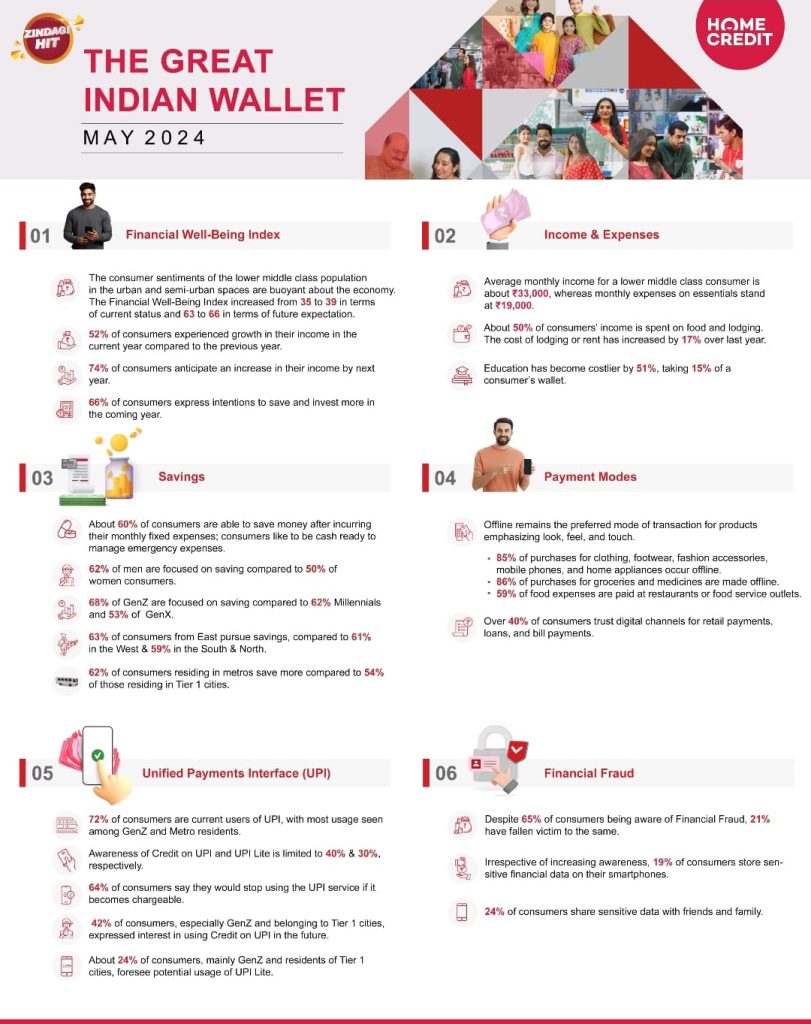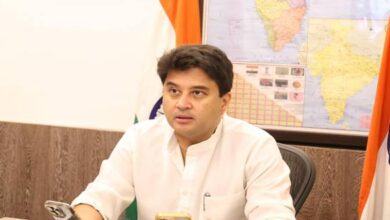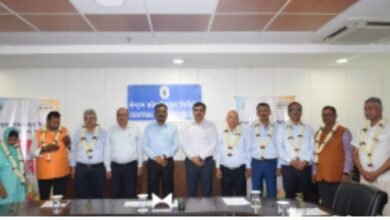The Great Indian Wallet’ Study By Home Credit India Reveals Surging Confidence In Financial Well-Being
Study conducted across 17 cities, with sample size of approx. 2500 in the age group of 18-55 years, with an annual income between Rs. 2 lakhs to Rs 5 lakhs

The Great Indian Wallet Study by Home Credit India (HCIN) provides a comprehensive overview of the financial behavior and trends among urban and semi-urban consumers in India. Here are some key findings from the study:
Income and Financial Expectations:
- 74% of consumers expect their incomes to increase by the next year.
- 66% anticipate saving and investing more in the coming year.
- Hyderabad has the highest average personal monthly income at 44,000 INR.
- The average monthly income in 2024 is 35,000 INR for metros and 32,000 INR for Tier 1 & 2 cities.
Primary Expenses for Lower Middle-Class Indians:
- Grocery (26%) and rent (21%) are the largest expenses.
- Monthly expenses average 19,000 INR against an average income of 33,000 INR.
Recreational Activities:
- Popular activities include local city travel, sightseeing, eating out, and cinema.
- Chennai leads in spending on these activities, while Lucknow spends the least.
Usage of Credit on UPI:
- 42% foresee using credit on UPI, a feature enabling instant credit through UPI apps.
- Motivations include time-saving (53%) and ease of shopping (44%).
- Concerns include potential debt traps (31%), overspending (28%), higher interest rates (24%), and charges (7%).
UPI Service Usage:
- 64% would stop using UPI if it became chargeable.
- Currently, 72% use UPI, with the highest usage in Chennai (90%) and the lowest in Ahmedabad (58%).
Spending Patterns and Discretionary Spending:
- Chennai spends the most on local travel, dining out, and cinema.
- Bangalore and Kochi spend the most on children’s education.
- Dehradun spends the most on medical expenses.
Savings and Financial Security:
- 60% prioritize building cash reserves after fixed expenses.
- Men (62%) save more than women (50%).
- Gen Z (68%) leads in savings, followed by Millennials (62%) and Gen X (53%).
- 21% of consumers have experienced financial fraud, with higher incidents reported in Delhi, Kolkata, Hyderabad, and Pune.
Regional and Demographic Insights:
- East India exhibits higher savings rates (63%) compared to other regions.
- Metros lead in savings with 62%, followed by Tier 1 (61%) and Tier 2 cities (54%).
- Gen Z, men, and metro residents are more likely to use UPI and show interest in Credit on UPI.
These findings reflect a positive consumer sentiment driven by economic growth and rising incomes, while also highlighting concerns about financial security and the cautious adoption of new financial technologies.





